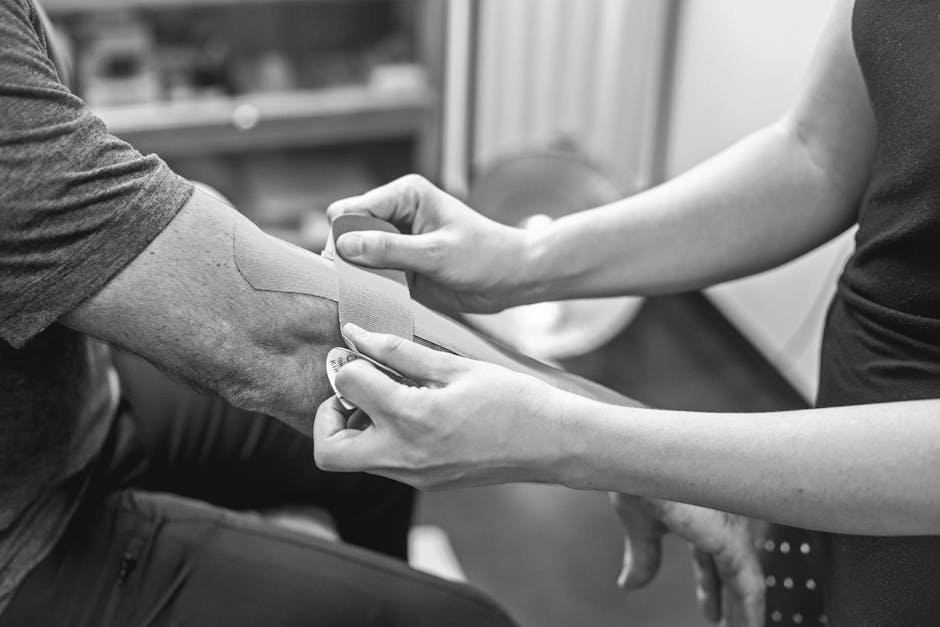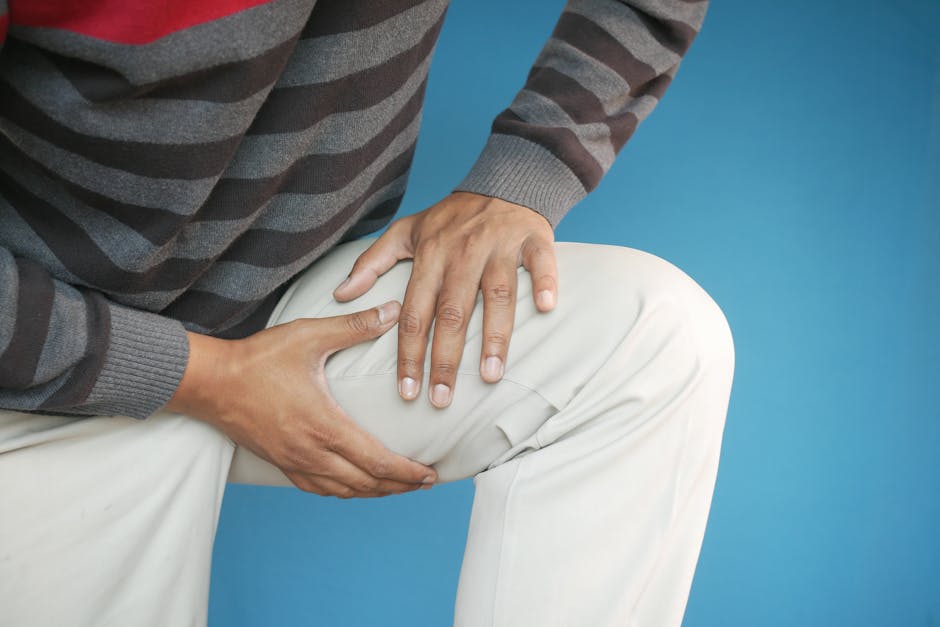Exercises for Joint Pain Relief: A Comprehensive Guide
Joint pain can be a debilitating condition that affects millions of people worldwide. Whether it’s caused by arthritis, injury, or overuse, finding relief from joint pain is essential for maintaining a good quality of life. While there are various treatment options available, one of the most effective ways to manage joint pain is through targeted exercises. In this comprehensive guide, we will explore the different types of exercises that can help alleviate joint pain, along with the benefits, techniques, and precautions to keep in mind.
The Importance of Exercise for Joint Pain Relief

Exercise is crucial for maintaining joint health and mobility. When done correctly, it can help strengthen the muscles around the joints, improve flexibility, and reduce pain and stiffness. Regular exercise can also help prevent further damage to the joints and improve overall quality of life. However, it’s essential to choose the right type of exercise based on the specific condition causing the joint pain.
Research has shown that exercise can be as effective as medication in managing joint pain, particularly for conditions like osteoarthritis. In fact, the American College of Rheumatology recommends exercise as a first-line treatment for arthritis, highlighting its importance in pain management and overall well-being.
Types of Exercises for Joint Pain Relief

There are several types of exercises that can help relieve joint pain, including:
1. Range-of-Motion Exercises
Range-of-motion exercises involve moving the joints through their full range of motion to maintain or improve flexibility. These exercises can help reduce stiffness and improve joint function. Examples of range-of-motion exercises include shoulder circles, wrist bends, and ankle circles.
2. Strengthening Exercises
Strengthening exercises focus on building muscle strength around the joints to provide better support and stability. These exercises can help reduce pain and improve joint function. Examples of strengthening exercises include leg lifts, bicep curls, and squats.
3. Aerobic Exercises
Aerobic exercises, also known as cardiovascular exercises, can help improve overall fitness, reduce weight, and relieve joint pain. Low-impact aerobic exercises like swimming, cycling, and walking are gentle on the joints while providing a good workout. These exercises can also help improve heart health and reduce the risk of other conditions like diabetes and heart disease.
4. Balance and Stability Exercises
Balance and stability exercises focus on improving coordination, proprioception, and posture to reduce the risk of falls and injuries. These exercises can help strengthen the core muscles and improve joint alignment, leading to reduced pain and better joint function. Examples of balance and stability exercises include single-leg stands, heel-to-toe walks, and balance board exercises.
5. Stretching Exercises
Stretching exercises can help improve flexibility, reduce muscle tension, and alleviate joint pain. These exercises focus on lengthening the muscles and tendons around the joints to improve range of motion and reduce stiffness. Examples of stretching exercises include hamstring stretches, calf stretches, and shoulder stretches.
Techniques for Safe and Effective Exercise

When it comes to exercising with joint pain, it’s essential to follow certain techniques to ensure safety and effectiveness. Here are some tips to keep in mind:
1. Start Slowly
If you’re new to exercise or have been inactive for a while, start slowly and gradually increase the intensity and duration of your workouts. This will help prevent injury and reduce the risk of exacerbating joint pain.
2. Warm Up and Cool Down
Before starting your workout, make sure to warm up with some light cardio and dynamic stretches. This will help prepare your muscles and joints for exercise. After your workout, cool down with some static stretches to help prevent muscle soreness and improve flexibility.
3. Listen to Your Body
Pay attention to how your body feels during exercise. If you experience pain or discomfort, stop immediately and consult a healthcare professional. It’s essential to listen to your body’s signals and adjust your workout accordingly.
4. Use Proper Form
Proper form is crucial for preventing injuries and getting the most out of your workout. Make sure to follow the correct technique for each exercise and avoid any movements that cause pain or discomfort.
5. Stay Hydrated and Rest
Drink plenty of water before, during, and after your workout to stay hydrated. It’s also essential to give your body time to rest and recover between workouts to prevent overuse injuries and fatigue.
Precautions and Considerations

While exercise can be beneficial for joint pain relief, it’s essential to take certain precautions and considerations to prevent further damage and ensure safety. Here are some key points to keep in mind:
1. Consult a Healthcare Professional
Before starting any exercise program, it’s crucial to consult a healthcare professional, especially if you have a pre-existing medical condition or injury. They can help develop a personalized exercise plan that suits your needs and abilities.
2. Choose the Right Exercises
Not all exercises are suitable for everyone, especially those with joint pain. It’s essential to choose exercises that are gentle on the joints and focus on improving flexibility, strength, and balance. Avoid high-impact activities that can worsen joint pain.
3. Modify Exercises as Needed
If you experience pain or discomfort during an exercise, don’t push through it. Instead, modify the exercise or choose an alternative that doesn’t aggravate your joint pain. It’s essential to listen to your body and adjust your workout as needed.
4. Use Proper Equipment
Using the right equipment can help prevent injuries and improve the effectiveness of your workout. Make sure to wear supportive footwear, use proper padding for floor exercises, and maintain good posture throughout your workout.
5. Monitor Your Progress
Keep track of your exercise routine and monitor your progress over time. This will help you identify any improvements or setbacks and make necessary adjustments to your workout plan. It’s essential to set realistic goals and celebrate your achievements along the way.
Expert Opinions
We reached out to Dr. Emily Johnson, a renowned rheumatologist, for her expert opinion on the role of exercise in managing joint pain. According to Dr. Johnson, “Exercise is a key component of arthritis management. It can help improve joint function, reduce pain, and improve overall quality of life. However, it’s important to tailor the exercise program to the individual’s needs and abilities to ensure safety and effectiveness.”
Conclusion
In conclusion, exercise plays a crucial role in relieving joint pain and improving overall joint health. By incorporating a variety of exercises like range-of-motion, strengthening, aerobic, balance, and stretching exercises into your routine, you can help reduce pain, improve flexibility, and enhance your quality of life. Remember to follow proper techniques, listen to your body, and consult a healthcare professional before starting any exercise program. With dedication and consistency, you can effectively manage joint pain and enjoy a more active and pain-free lifestyle.
So why wait? Start incorporating these exercises into your daily routine and experience the benefits of joint pain relief today!




